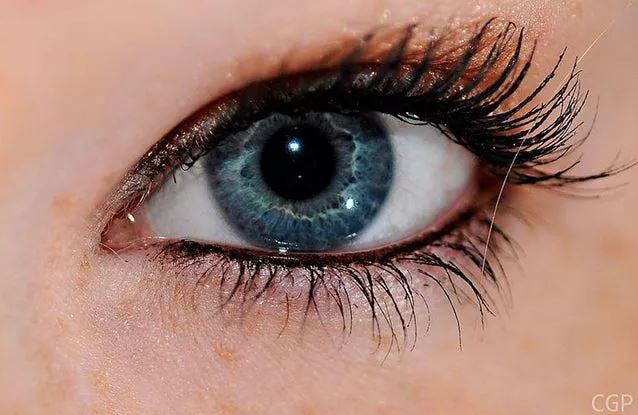Modern humans have access to more information than ever before, but there are still many things we believe that are not true. Despite the fact that we have access to the Internet, smartphones and many books, many myths still remain. Whether these myths are about history or science, the amount of falsity you thought were real facts are staggering. There will certainly be myths in this article that you have never thought to question. Here are 15 totally false things you’ve always believed in.
1. Chameleons change color to hide

Most people assume that chameleons change color to camouflage themselves, allowing them to hide from predators by blending into their environment. However, this is not the real reason why these reptiles change color.
Chameleons change color to alert or communicate with other chameleons in a danger zone. Most species have only a limited number of colors, and some chameleons cannot change color at all.
2. The chicks will be abandoned by their mothers if they are cared for by a human being

Children are often told not to touch the chicks, as the mother will be able to detect the smell of the person who has been in contact with them and then let them die. Although you probably shouldn’t pick up all the chicks you see, picking one will not condemn the animal to certain death.
Birds develop very strong bonds with their young and are unlikely to leave them unattended for any reason. In addition, most birds do not have a strong sense of smell, so they would probably not even notice the addition of a foreign smell.
3. The children have a sugar rush after eating candy

Despite what millions of parents around the world believe, sugar rushes in children are simply not something that actually happens. Although it is generally believed that children who eat a lot of sugar will become hyperactive and behave badly, there is actually no evidence to support this statement.
Studies have shown that the body does not receive more energy by ingesting large amounts of sugar in a short period of time, because the biological processes involved are highly regulated. The myth is perpetuated because parents need something to blame for their children’s erratic behavior, other than, you know, the way they were raised…
4. Napoleon was really small

The belief that Napoleon was small became so rooted in the popular belief that the term “Napoleon syndrome” is commonly used to describe someone who is angry because he is popular. In truth, the French emperor was not particularly small.
At just over a meter and a half, he was actually taller than the average Frenchman of the time. There are two reasons why the myth has spread: first, its enemies may have spread rumors to make it appear less imposing. Second, Napoleon chose very tall soldiers to serve in his personal guard, which could have made him appear smaller than he really was.
5. Humans have only five senses

One of the most common myths is that people have only five senses. It is taught to children in school and has been implemented in popular belief.
The truth is much more complicated. In addition to the usual list of sight, hearing, taste, touch, and smell, researchers argue that there could be up to 14 senses in total. These include the ability to detect where your body parts are located (even when your eyes are closed), as well as the ability to distinguish between different temperatures. Impressive, isn’t it?
6. The different parts of the language corresponding to different tastes

The language map was something that many people learned in school. This map proposes to use different areas of the tongue to detect distinctive tastes such as sweet and sour taste.
Although it is known that this diagram has been false for decades, a significant number of people still believe in it. The truth is that the tongue is covered with receptors that are all able to detect different tastes. No part of the language is used specifically for certain tastes.
7. Swimming after eating food can cause cramps

A general rule that many people have followed until adulthood is that you should never swim after eating food because it may increase cramps, which could potentially lead to drowning.
After eating food, people often wait up to an hour to go back to the water. The only problem is that there is no evidence to suggest that swimming right after eating causes cramps. On the contrary, there is so little risk that professional endurance swimmers will even eat in the water.
8. Bats are blind and rely only on their sonar to move safely

The belief that bats are completely blind has become so widespread that the expression “blind as a bat” is common in the English-speaking world. This rumor probably originated from the understanding that bats use sonar to fly in the dark.
Despite sophisticated sonar systems, no species of bat is completely blind. On the contrary, many have excellent vision and rely on other senses to complement their vision, rather than replace it.
9. The bulls are enraged because of the red color

The common consensus is that bulls charge the matadors because they are enraged by the red color. Not only is this myth false, but it is also physically impossible. Bulls are actually color-blind, which means they can’t tell the difference with red and other shades.
When the animal charges at any point in the ring, it is because it is attracted by the movements of the cape and matador, rather than by the red color.
10. Splitting a worm in half creates two worms

Most children believe that cutting an earthworm in half will result in the creation of two separate worms. The evidence comes from the fact that both ends seem to continue to live after bisection.
Contrary to this belief, cutting a worm will never create two worms. Instead, the half that contains the mouth may be able to survive and heal itself. The other end will simply die because it has none of the organs necessary for its survival.
11. You can see the Great Wall of China from space

Of all the man-made objects on Earth, the one most often said to be visible from space is the Great Wall of China. Some even claim that the structure can be seen from the moon.
In reality, the structure is only visible to people in very low orbits, just outside the Earth’s atmosphere, and an ideal time is needed. Beyond 160 km, the wall becomes almost invisible, as the building materials used to build it are integrated into the environment. Neil Armstrong also confirmed that he could not distinguish any artificial structure from the moon’s surface.
12. People only use 10% of their brains

A lack of understanding of how the brain works have led to the widespread myth that humans use only about 10% of their brain at any given time. This mistaken belief has also been used to provide evidence to those claiming to have extrasensory or paranormal abilities, the reasoning being that these people can exploit their brains more.
Although the origin of this myth is not clear, it has been shown by various studies to be false. In truth, the whole brain is constantly active, with different regions focused on performing different tasks. Despite what Bradley Cooper wants you to believe, all our neurons are constantly being used.
13. Humans have evolved from great apes

Thanks in part to a misunderstanding of evolution, many people believe that humans are directly descended from monkeys. This often leads some to wonder why not all great apes have become human creatures.
The real process saw humans and monkeys evolve from a common ancestor, which then diversified into several different species, creating chimpanzees, gorillas, and humans.
14. Albert Einstein failed in math

Albert Einstein, one of the world’s most important scientists, is often considered one of the most intelligent people of the last century. The fact that he may have failed in a mathematics class at school may seem unthinkable, but it is a myth that has persisted.
Despite popular belief, Einstein never failed in math. He directly addressed the rumors during his lifetime, stating that he was self-taught and had learned many difficult mathematical disciplines by himself and had mastered arithmetic by the age of 15. Turns out he was actually quite conventionally smart.
15. The awakening of a sleepwalker can cause them harm

Sleepwalking can be a strange experience, but it is not dangerous in itself. However, many people believe that waking a sleepwalker can cause significant harm to him or her; it can even cause death from shock.
The various studies that have examined sleepwalking have never noted cases where a person has been physically abused following an awakening. A sleepwalker may become anxious or confused for a short period of time, but never suffers a real injury. Sometimes it may even be necessary to wake someone up to prevent them from getting hurt.


![[Photos] Why WD-40 Is Magic In Your Garden?](https://lifetonik.com/wp-content/uploads/sites/7/2019/08/WD40-Prices-Highres_Page_8_Image_0008-218x150.jpg)





![[Photos] Take A Look Of The Obama’s New Home Before It’s Banned](https://lifetonik.com/wp-content/uploads/sites/7/2019/07/Obama1-218x150.jpg)

![[Slideshow] Celebrity Homes: 21 Of The Most Luxurious](https://lifetonik.com/wp-content/uploads/sites/7/2019/07/Taylor-Swift-218x150.jpg)
![[Slideshow] More Parents Are Now Gluing Pennies to the Bottom of their Kid’s Shoes](https://lifetonik.com/wp-content/uploads/sites/7/2019/07/Keep-Them-Entertained-218x150.jpeg)
![[Photos] 20 Fashion Mistakes That Too Many Women Make!](https://lifetonik.com/wp-content/uploads/sites/7/2019/07/5-style-mistakes-that-make-you-look-frumpy-featured-218x150.jpg)



















![[Gallery] 25 Discounts For Seniors To Which You Are Entitled Without Knowing It](https://lifetonik.com/wp-content/uploads/sites/7/2019/08/EAZxECUXUAAvNZR-218x150.jpg)
![[Slideshow] Here’s the salary of every governor in the United States](https://lifetonik.com/wp-content/uploads/sites/7/2019/08/Charlie-Baker-218x150.jpg)
![[Photos] No One Will Want To Buy This House After Seeing These Pictures](https://lifetonik.com/wp-content/uploads/sites/7/2019/08/terrible-real-estate-photos-2-5c35e727c9f95__700-218x150.jpg)



